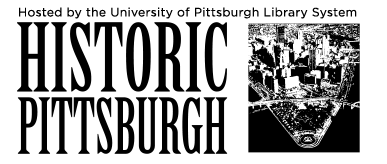About Historic Pittsburgh
The Historic Pittsburgh website traces its origin back to 1998 when the University Library System (ULS) at the University of Pittsburgh established a new library unit called the Digital Research Library. Its initial project was to offer online access to some of the city’s historic resources tucked away in libraries and archives. The ULS hoped that such a project would immediately attract interest from local historians, teachers and students. Further, online access to such material was breaking down the long-held barrier of time and place since digitized content could be accessible by anyone, anywhere regardless of the location of a collection.
The ULS partnered with the Library & Archives at the Heinz History Center to select books and maps from our respective collections suitable for digitization. All of the initial digitization was outsourced to scanning vendors. We also worked together to provide online access to standardized descriptions of our mutually held archival and manuscript collections (typically referred to as finding aids). The initial Historic Pittsburgh site was launched in 1999.
Shortly thereafter, we added access to 19th century census data from the City of Pittsburgh and Allegheny City; this data set was donated by a Pitt history professor who had previously transcribed it. We also created a robust chronology that stretched back to the earliest days of Pittsburgh’s history starting in the 1750s. Thousands of events would comprise the timeline largely taken from Stefan Lorant’s Pittsburgh: The Story of an American City (1999). Early project partners worked together to move the chronology forward so that it remained up-to-date.
In response to tremendous user feedback for the call to add visual image content to the site, the ULS and Heinz History Center, along with a new project partner (Carnegie Museum of Art), received a National Leadership Grant from the Institute of Museum & Library Services (IMLS) in 2002 to address this need. With this opportunity, the project partners could consider joint selection decisions, standardize our metadata, and present a unified front to accessing image content across a range of collections and repositories. When the grant expired a few years later, Historic Pittsburgh users gained access to over 10,000 visual images from a dozen photographic collections. With a proven workflow in place with metadata requirements and low barrier to join, the site has grown to include over 35,000 visual images from over 70 collections contributed by a dozen more new partners.
Looking back over these years, the technology has changed as has our capacity to scan. The sheer volume of material on the site has increased with more partners being added who contribute unique and valuable content that documents the history of just not Pittsburgh anymore, but the greater Western Pennsylvania region. We look forward to continuing to see the site grow!
